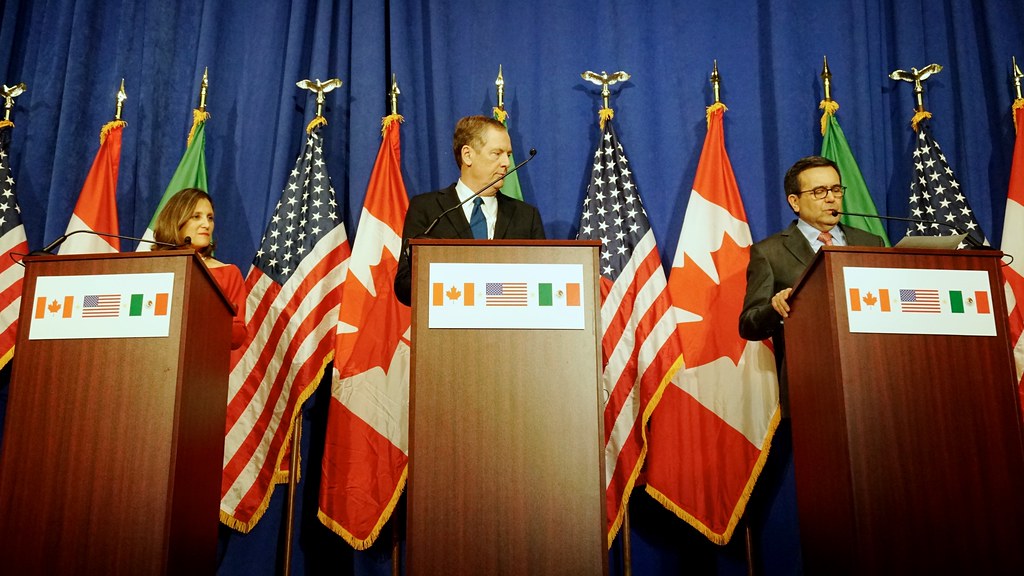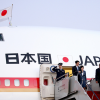Donald Trump is a mercantilist. He has protectionist urges and instincts, he sees international trade as a zero-sum game and considers trade deficits enemies to be defeated. He seems allergic to multilateral cooperation and feels comfortable in bilateral interactions in which he can flex his muscles and behave like a schoolyard bully among leaders he considers to be weaker than himself. In short, he is the antithesis of what for decades have been more amiable US leaders (much more to the liking of Europeans): that is, defenders of a rules-based global economic order and inclined to cooperate with other governments to promote long-term mutual interests –even if they would also look at the same time for advantages for US companies–.
As the most nationalist President that the US has had in a long time, Trump arrived at the White House with promises to withdraw the US from the Trans-Pacific Partnership (the TPP, which had only recently been approved) and from NAFTA (the regional trade agreement with Canada and Mexico), to unilaterally impose higher tariffs on Chinese products and to increasingly ignore the rules of the globalisation game as established by the World Trade Organisation (WTO). This was certainly surprising given that, according to a study by the Peterson Institute for International Economics, the US economy had generated economic gains of more than US$2 trillion (in 2016 dollars) thanks to international trade between 1950 and 2016 (some 11% of the country’s GDP), a period during which the system of multilateral rules, promoted by the US itself, was in place. A different issue altogether is the distribution of this large sum of new wealth among the population; but this is a question better addressed by US fiscal policy through redistribution, should the voters ever consider it opportune.
“The country’s system of checks and balances, along with more exposure to different viewpoints on the realities of trade has led Trump to hold a more cautious stance”
Ignoring the actual fact that international trade is, and will continue to be, a clear generator of wealth, Trump began in January 2017 to deliver on his promises, surprising those who had argued that Trump would drop his incendiary campaign rhetoric to become a ‘normal’ President. And, indeed, during Trump’s first year, his ambitions have run up against reality. He quickly realised that the power of the US President –for decades considered to be the most powerful man in the world– is more limited than he had believed. The country’s system of checks and balances, along with more exposure to different (and more sophisticated) viewpoints on the realities of trade –which he has listened to while still not sharing their outlook– has led Trump to hold a more cautious stance. Of everything he had promised, so far he has only withdrawn the US from the TPP. NAFTA is now being renegotiated, and his relationship with China and the WTO, at least for the moment, is turning out to be more strategic than expected. In particular, although his Administration maintains a discourse of confrontation with nearly all the great economic powers (and especially which those with which the US maintains a bilateral trade deficit, excepting Japan), for the moment he has been careful to restrain from initiating actions which would be flagrant violations of current rules and norms. He has not yet approved any unilateral tariffs against China, nor has he moved forward with his proposal for a border-adjustment tax. Therefore, he has managed to avoid the opening of procedures against the US for infringement of WTO rules.
“The Trump Administration has been attempting to use the WTO for its own benefit while, at the same time, attempting to undermine its functioning”
This new strategy –to play tough but within the rules, as opposed to abandoning the system to attempt to destroy it– seems to be linked to the rise in influence of Robert Lighthizer, Trump’s US Trade Representative (or USTR, a kind of trade minister) and the marginalisation of his more combative (and less experienced) advisors, Wilbur Ross and Peter Navarro, both of whom were very close to Trump during the election campaign. Lighthizer, an experienced lawyer and trade policy specialist who worked in the Reagan Administration during the 1980s, is a critic of the WTO; but he also knows well how it functions, particularly in legal terms. It therefore appears that, during its first year, the Trump Administration has been attempting to use the WTO for its own benefit while, at the same time, attempting to undermine its functioning. Instead of imposing higher tariffs unilaterally on China (which would be discriminatory and, therefore, inconsistent with WTO regulations), the Administration has initiated various actions against the Asian giant within the WTO in relation to steel and aluminium imports, as well as against Chinese solar panels. China has also been denied ‘market economy’ status within the WTO, something which should have been automatic 15 years after China’s accession to the organisation and which would have limited the instruments of trade defence that the US and the EU, among others, could legally use to reduce the importation of Chinese goods (above all it would have limited recourse to ‘anti-dumping’ proceedings). Facing such a situation, China has also presented a complaint to the WTO; but it is still too difficult to foresee how such a complaint might be resolved.
But the US is also undermining the functioning of the ‘crown jewel’ of the WTO: its dispute resolution mechanism. By refusing to allow the naturally occurring vacancies on the WTO appeals board to be filled by new replacements, US obstructionism is slowly making the system unworkable. If the US is successful in this effort, the WTO will not be able to issue decisions regarding the violation of its rules, allowing the US to infringe them, and returning us to the dark times during which trade relations were managed according to the law of the strongest. Finally, as seen at the WTO Summit in December in Buenos Aires, the US has no intention of allowing any initiative to advance within the WTO –not those related to the Doha Round, nor those related to new forms of trade which require new forms of regulation, like electronic commerce or environmentally-related trade–. With all this, the US has initiated a strategy that could mortally wound the WTO by making it irrelevant and inoperative, but without explicitly destroying it, and while still using it as a mediator in trade conflicts with China, which are bound to increase from now on.
In the renegotiation of NAFTA, the Trump Administration seems to be following a similar strategy. Instead of abandoning the negotiating table, Trump’s people are making proposals that will not be acceptable to Mexico or Canada, particularly the proposal to have automatic revisions of the agreement every five years (but which would allow for US withdrawal just as easily), or the plan to eliminate the dispute resolution mechanism which acts as an independent tribunal and assures compliance with the agreement. Because Mexico holds elections in July, it is likely that these negotiations will continue until 2019. Meanwhile, Canada has already initiated actions against the US within the WTO for what it considers illegal subsidies, complicating the NAFTA negotiations even more.
In conclusion, the first year of Trump with respect to international trade has been less damaging to the multilateral trade system than was originally feared. This first year has also allowed us to see that the US Administration maintains a clear interest in isolating itself increasingly from the rest of the world, and that it will employ a strategy that is increasingly more aggressive and confrontational in order to obtain commercial advantages without explicitly violating the rules of the WTO –but all the while undermining the rules-based system of globalisation governance–. From 2018 into the future it is very possible that we will witness an increase in the level of tension and conflict surrounding international trade.



